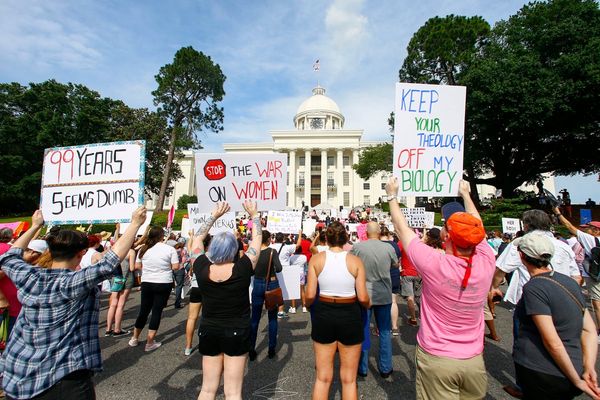
Lizzie Flaherty works in a library, but she’s not a librarian. Flaherty has an unusual role: she is the first library social worker employed in South Australia.
Australia’s 1,700-odd public libraries offer much more than books. Inside, people find refuge, connections (both human and internet), and a free space open to everyone.
But, increasingly, those open doors are also letting in the woes of the world, Dr Jane Garner says, particularly because of the cost-of-living crisis.
“Whatever challenges exist in the community – poverty, mental health struggles, addiction, homelessness – will inevitably be present in the library as well,” says Garner, an associate professor at Charles Sturt University, and an expert on the relationship between vulnerable people and public libraries.
“Because [library] doors are open to all, offering a space where everyone is welcome, no matter what issues they carry with them.”
Many government services, post offices and banks have closed their shopfronts and shifted their operations online. This has left people with fewer opportunities for face-to-face interaction and support.
Places like Centrelink will tell people that the library will help them fill out their forms, while banks will send people in for help with their passwords, Garner says.
Then there are people with mental illness, those experiencing homelessness and other vulnerable people for whom there isn’t enough support.
It’s cost shifting, Garner says, and council libraries are stepping in where people have fallen through the gaps. That puts pressure on library staff, who need better workplace support, she says.
Garner’s research has found 46% of library workers have felt unsafe at work. There are reports of people spitting on staff, of violence and aggression, threats of murder, sexual harassment and disturbing behaviour around children.
Libraries were already undergoing a digital transformation but that process was fast-tracked by the Covid pandemic. Now they’re transforming in other ways, too, becoming community hubs.
Libraries often stay open late in heatwaves to offer air-conditioned cool, and in winter to offer warmth. They offer courses and events and items to borrow, like bakeware or boardgames, tools and toys.
The Salisbury Community Hub library in Adelaide’s north offers courses in mending clothes, snug spaces for the neurodiverse and hosts appearances by famous authors.
The library has working spaces with charging stations, bookable meeting rooms and study spots for students who might not want to go home. A “bring your bills” day helps people understand their power or telephone bills.
And Lizzie Flaherty, the social worker, is also there to help any visitor.
Her role is two-pronged, she explains.
The first is working directly with people who come in experiencing a crisis or some other issue. Sometimes they’ll approach her, or staff will bring them over, or she’ll just introduce herself to someone who seems to need help.
“There are a lot of icebreaker opportunities that I can engage in to test the waters,” she says. “I will help out around the kiosk or computer area and be like ‘oh, do you need some help logging on’, then build off that interaction.”
The second is working with staff, helping prepare them to work with vulnerable people.
The Australian Library and Information Association deputy CEO, Trish Hepworth, says libraries occupy an important place in society.
“A library is … open, and welcomes everybody, with no cost and no expectation that people will spend money.
They offer refuge, she says, and “are the ideal place for people to congregate and be with other members of the community”.
But Hepworth’s research has found a post-Covid increase in violence in the public library sector.
“That’s something we see commonly in public-facing roles across the country,” she says.
There are 1,714 libraries and library outlets in Australia, employing about 7,600 staff. More than 8 million Australians are library members. They borrow just more than six items a year, including ebooks and audiobooks.
Garner says people with high psychosocial needs often gravitate towards libraries.
“The doors are open, the lights are on,” she says. “If they’re in crisis housing they get kicked out in the morning. If they’re on the streets, they’re often awake all night because it’s not safe.
“They are an obvious place – non-clinical, non-threatening – to put support.”
Only a handful of Australian public libraries are believed to have social workers; Garner estimates about seven.
The Salisbury council approached care provider Sonder to find a social worker for a pilot, making Flaherty the first library social worker in South Australia.
“I’m a big nerd and a big geek, and I’ve grown up in libraries. I grew up low socioeconomic, so we spent a lot of time in libraries … it’s always been a safe space for me,” she says.
Asked how she copes with challenging people, Flaherty says: “I’ve seen so much, there is very little that can stress me out, freak me out at this point.
“If someone’s in a critical moment, in a crisis, it comes back to ‘this is an individual, a person, let’s connect with that person’, and usually it works out fine.”
Garner says social workers act as a buffer between library staff and people with high needs.
“Library staff are highly trained, but they’re not trained in social service roles,” she says.
“Social workers are there to take on that role, and to train library staff in how to work with vulnerable people, to build connections, to put them in touch with services they may not know about.
“Libraries are the last place where you don’t have to buy a coffee to sit down.”







